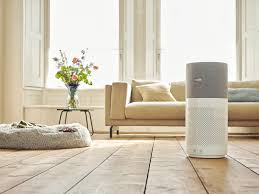Air pollution is a growing threat to public health, especially in urban centers across Pakistan. The most visible and harmful form of air pollution is smog—a toxic mixture of smoke and fog that blankets cities like Lahore, Islamabad, and Karachi, especially during the winter months. In response, many individuals are turning to air purifiers as a way to reduce exposure to indoor pollutants. But how effective are air purifiers against smog? Let’s explore the battle of smog vs air purifier, and what it means for your health and well-being.
At Saaf Pakistan, we are committed to helping communities breathe cleaner air and make informed choices to protect themselves from pollution.
Understanding the Smog Crisis in Pakistan
Before diving into the debate of smog vs air purifier, it’s important to understand what smog actually is and why it’s such a major concern. Smog is formed when sunlight interacts with pollutants like nitrogen oxides (NOx), volatile organic compounds (VOCs), sulfur dioxide, and fine particulate matter (PM2.5 and PM10). These pollutants come from vehicles, factories, brick kilns, crop burning, and waste incineration.
In cities like Lahore, smog levels frequently exceed safe limits set by the World Health Organization (WHO). The Air Quality Index (AQI) often hits “hazardous” levels during peak smog season, posing serious health risks for children, the elderly, and people with respiratory or cardiac conditions.
What is an Air Purifier?
An air purifier is a device designed to remove contaminants from the air in a room. Most air purifiers use a combination of filters—typically HEPA (High-Efficiency Particulate Air) filters and activated carbon—to capture fine particles, allergens, dust, bacteria, and harmful gases. Some advanced models also include UV light or ionization technology to destroy airborne pathogens.
In the battle of smog vs air purifier, air purifiers act as a line of defense against indoor air pollution. While they don’t eliminate the source of smog, they significantly reduce your exposure to harmful particles indoors.
Smog vs Air Purifier: Key Differences and Interactions
To better understand the dynamic of smog vs air purifier, it helps to break down how each element behaves and influences air quality.
Source vs Solution
-
Smog is a large-scale environmental problem caused by various sources—vehicles, industrial emissions, and agricultural practices. It affects outdoor and indoor air.
-
Air purifiers, on the other hand, are personal or household solutions. They work indoors and cannot clean outdoor air or eliminate the source of smog.
Pollutants and Particulate Matter
Smog contains PM2.5 and PM10 particles—extremely fine pollutants that can penetrate deep into the lungs and bloodstream. These are the most dangerous elements of air pollution.
-
High-quality HEPA air purifiers can filter out PM2.5 and larger particles effectively.
-
Activated carbon filters help remove gaseous pollutants and odors commonly found in smog.
In the context of smog vs air purifier, the purifier wins in protecting you indoors but has no impact on overall environmental conditions.
Limitations
While air purifiers provide significant relief indoors, they have limitations:
-
They cover only a limited area and require proper room size matching.
-
Filters need regular cleaning or replacement to remain effective.
-
They don’t remove carbon dioxide or increase oxygen levels.
So, in the debate of smog vs air purifier, air purifiers serve as a helpful but temporary shield, not a permanent fix.
Health Benefits of Using Air Purifiers During Smog
During smog season, having a reliable air purifier can significantly improve indoor air quality. Here’s how air purifiers can protect your health:
-
Reduces respiratory irritation by removing fine particles that trigger asthma and allergies.
-
Minimizes the risk of cardiovascular issues linked to long-term exposure to polluted air.
-
Improves sleep quality by creating a cleaner breathing environment.
-
Supports immune function, especially in children and elderly individuals.
-
Lowers exposure to airborne pathogens, including bacteria and viruses that thrive in polluted environments.
At Saaf Pakistan, we encourage every household, especially those with children or elderly members, to invest in an air purifier during smog season.
Choosing the Right Air Purifier
When evaluating smog vs air purifier, the type and quality of the purifier matter greatly. Here are some key features to look for:
HEPA Filter
Ensure the device has a certified HEPA filter, capable of removing 99.97% of particles as small as 0.3 microns. This is crucial for filtering out PM2.5.
Activated Carbon Filter
This helps absorb harmful gases and VOCs that are often present in smog. It also eliminates odors.
CADR Rating
Clean Air Delivery Rate (CADR) indicates how fast the purifier can clean the air. Choose a device with a CADR rating appropriate for your room size.
Noise Level
Some purifiers can be loud, especially at high settings. Look for a model with silent or night modes for continuous use.
Smart Features
Advanced air purifiers offer real-time air quality monitoring, filter change alerts, and automatic speed adjustments based on pollution levels.
Practical Tips for Smog Season Protection
While the smog vs air purifier debate highlights the benefits of indoor air purifiers, they are only part of a broader strategy. Here are additional steps to safeguard your health:
-
Stay indoors during peak smog hours (early mornings and evenings).
-
Seal windows and doors to prevent polluted air from entering.
-
Use indoor plants such as snake plant, aloe vera, and peace lily that may help purify air naturally.
-
Wear an N95 mask if you need to go outside during high smog days.
-
Check the AQI daily and plan activities accordingly.
-
Avoid strenuous outdoor exercise during high pollution periods.
At Saaf Pakistan, we promote not just individual protection but also community-level awareness to tackle smog from all angles.
The Bigger Picture: Reducing Smog at the Source
Air purifiers are a powerful defense tool, but the long-term solution lies in reducing the production of smog itself. Here’s how we can address smog from its roots:
-
Switch to cleaner fuels and upgrade to Euro-V compliant vehicles.
-
Enforce regulations on industrial and brick kiln emissions.
-
Adopt sustainable agriculture to eliminate crop burning.
-
Improve public transport to reduce vehicle load on roads.
-
Implement green urban planning with increased tree cover.
Saaf Pakistan actively engages with communities, schools, and policymakers to advocate for such sustainable solutions. The real victory in the battle of smog vs air purifier will come when air purifiers become an optional tool, not a necessity for survival.
Conclusion:
The battle of smog vs air purifier is not about choosing one over the other, but about understanding their roles. Smog is a widespread environmental issue that demands systemic change and public policy reform. Air purifiers, while effective indoors, are short-term protective measures that help reduce immediate health risks.
At Saaf Pakistan, our mission is to empower people with knowledge and tools to fight air pollution at both personal and community levels. While investing in an air purifier is a smart choice during smog season, it’s even smarter to support long-term efforts that make clean air accessible for all.



